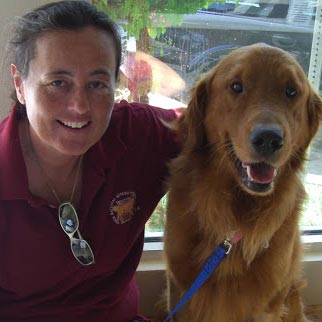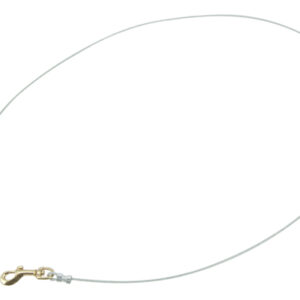No products in the cart.
Secret Dog Training Success Tip #2
Secret Dog Training Success Tip #2
- BADDogs Inc
Moving on to our next Secret Dog Training Success Tip. How to tell the good stuff from the not-so-good stuff? That’s a tough question to answer, for lots of reasons.
What are the reasons?
First, the dog training biz in the US is completely unregulated. There’s no central agency that says how dog training should be done, how dog trainers should act or what the typical dog person should expect from a dog trainer. This is pretty upsetting when you think about it.
Just imagine if there was no bar association, and lawyers all did their own thing. How about physicians, or even plumbers? Carpenters? Electricians? Most of the professions we depend on a great deal are regulated. This gives us an assurance the work any single one of them does will conform to some standard, and we are reasonably sure we’re getting what we need and what we’re paying for.
With dog training material, you’re pretty much on your own to figure out who’s got the goods and who doesn’t. And that’s a little too much to dump on the average human who’s not a dog expert.
When you’re shopping for dog books, DVDs, websites, blogs and videos, how can you know what’s worth your time and money, and what’s not?
Now, you know how we hate to be negative, but there are truly a lot of hints you’ll find that tell you it’s time to move on. Here’s a short list:
Dominance
Dominance, including the dreaded “alpha” thing, as a basic concept of dog social behavior has been debunked for many years. In fact, the very guy who came up with the idea in the first place, Dr. David Mech, is the one who actually debunked it. Click here to watch a video of Dr. Mech debunking it. So why does this idea persist? Probably because social dominance is a human social thing. Think about it. People are the ones who strive for the bigger car. The fatter paycheck. The larger home in the better neighborhood. The corner office. The higher military rank.
Domestic dogs, not so much. Most dogs I know are happy to dig a shallow hole to lie in, eat stuff we drop on the floor and have a small group of dog-bros to hang with.
Pack Theory
Pack Theory is another idea whose ship has sailed. Pack theory is based on the idea that our domestic dogs are direct descendants of the wolf, and by studying wolf behavior we can understand more about our dogs. Really? Firstly, the Dog Genome Project has identified that our domestic dogs did not evolve from the modern wolf. Instead, our dogs came from a common, now extinct, ancestor of both the modern wolf and our beloved dogs. If you think about it, this is similar to the link between humans and bonobos and chimpanzees; do we study ape behavior in order to understand ourselves better? Doubt it.
In fact, recent studies in canine cognition have demonstrated that domestic dogs and wolves are very different in their aptitudes and social behavior. So if we want to know more about wolves, cool, study wolves. If you want to learn more about your dog, well, for cheese sake, check out your dog!
Folks who study our modern domestic dog know that these critters don’t “pack”. There’s lots of evidence of this. In many places around the world, “unowned” dogs live their own lives, roam about and do not form cohesive groups. Any individual dog may hang with some dogs for a while, but generally moves on. Their social groups are pretty changing and fluid. Not “packing” at all. So if you have been a student of this theory, it’s probably time to “pack it in”.
Punishment preferred
When I started dog training in the last millennium, the main tools we had at our disposal were leashes and choke chains. Nowadays, many trainers who still use choke chains prefer to call them “training collars”, because they’ve figured out that many people who pay attention don’t care to choke their dogs. Well, I used them for almost 30 years and I always called them “choke chains” and I’m too old to change now. Training that relies on choke chains, pinch/prong collars and shock/electronic collars is not compatible with modern training technology.
Training with these devices follows a teaching methodology where the dog learns to do stuff in order to avoid something unpleasant. Sit or get some unpleasant sensation. And honestly, these methods absolutely work. You can teach a dog lots of things using the “or else” method. But it’s very old technology, and lots of better stuff is out there.
How can you tell what the better stuff is?
Sounds like Secret Dog Training Success Tip #3 is on the way….
BTW, did you miss Secret Dog Training Success Tip #1?
Share This Post?
Facebook
Twitter
Pinterest

Recent Articles
About Author

Barbara Davis
I’ve been working with dogs and their people for more than 30 years! I’m certified in dog training by the Certification Council for Professional Dog Trainers, and certified as a Dog Behavior Consultant through the International Association of Animal Behavior Consultants (I’m also a founding member, currently Chair of Dog Division and serve on the faculty of their behavior consulting program, Animal Behavior Consulting: Principles and Practice). I’m also certified in training and behavior by the Association of Animal Behavior Professionals, and serve on their advisory board. I’m pleased to participate as an AKC CGC/S.T.A.R. Puppy program as an Evaluator.
Information
Featured Products
-
 Rattlesnake Avoidance Training Through Positive Reinforcement
$195.00 – $325.00Rated 0 out of 5
Rattlesnake Avoidance Training Through Positive Reinforcement
$195.00 – $325.00Rated 0 out of 5
Products
-
 Hazard Avoidance Training
$125.00 – $295.00Rated 0 out of 5
Hazard Avoidance Training
$125.00 – $295.00Rated 0 out of 5 -
 Rattlesnake Avoidance Training Through Positive Reinforcement
$195.00 – $325.00Rated 0 out of 5
Rattlesnake Avoidance Training Through Positive Reinforcement
$195.00 – $325.00Rated 0 out of 5 -
 Teenie Tethers
$10.95 – $12.95Rated 0 out of 5
Teenie Tethers
$10.95 – $12.95Rated 0 out of 5 -
 Trainer Packs by Pet Tethers
$50.00 – $75.00Rated 0 out of 5
Trainer Packs by Pet Tethers
$50.00 – $75.00Rated 0 out of 5
